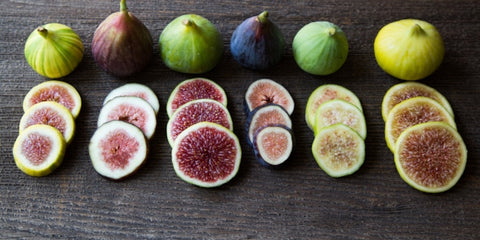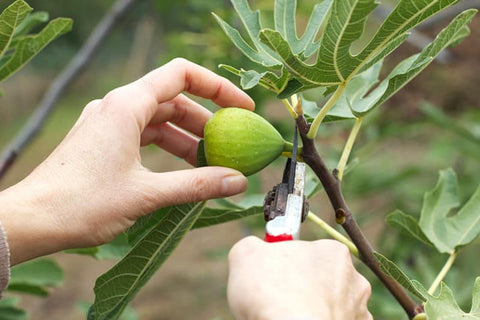Are you a fan of figs but not a fan of the supermarket price tags? Instead of breaking the bank to enjoy figs, consider growing your own. Figs are easy to cultivate, thriving in almost any planting zone and requiring minimal care.
If you're interested in growing figs, you've come to the right place. I'll guide you through fig varieties, how to plant them, proper care techniques, addressing potential issues, good and bad companion plants, and how to harvest and store them.

Here's everything you need to know about growing figs:
Delicious Fig Varieties

-
Brown Turkey
- Skin: Brown with a hint of purple.
- Flesh: Pink, lighter than other varieties.
- Sweetness: Lower than some other varieties.
-
Kadota
- Skin: Green.
- Flesh: Pink.
- Not overly sweet, great for making jams and jellies.
-
Adriatic
- Skin: Light green or pale yellow.
- Sweeter than other figs, with pink flesh.
-
Calimyrna
- Traditional green exterior with pink flesh.
- Strong nutty flavor, pairs well with most cheeses.
-
Black Mission
- Common variety with deep purple color.
- Very sweet, an excellent choice for those who enjoy sweet fruits.
How to Grow Figs
Growing figs is a straightforward process. Follow these simple steps, and your figs should become prolific producers in the coming years:
Container Planting
-
Figs thrive best when planted in USDA zones 7 or higher. If you live in a region with winter temperatures in the single digits, consider container planting and move them indoors during winter.
-
Whether in a container or outdoors, plant figs in early spring or late fall when the trees are still dormant.
In Containers
-
For colder planting zones, grow figs in large containers, ensuring they have ample space for their deep roots.
-
Choose well-draining soil and plant the fig tree, making sure the roots are fully covered, and the soil is packed around the base.
-
Place the container in full sunlight and move it outdoors in warmer seasons. Water regularly, and fertilize monthly during the growing season.

Outdoor Planting
-
If you live in a warm climate, plant fig trees in well-draining soil with plenty of sunlight.
-
Dig a hole deep enough for the roots to comfortably sit, covering them with soil. Ensure the soil is packed around the base to prevent air from reaching the roots.
-
Leave at least 20 feet of space between fig trees and other structures or plants.
Caring for Figs
Figs are low-maintenance trees that reward you with quality fruit. Here's how to care for them:
Watering
- Figs need regular watering. If planted outdoors, rainwater should suffice outside of the dry season. For newly planted figs, water weekly to establish a strong root system.
Fertilizing
- Container-grown figs benefit from monthly fertilization during the warm season. Outdoor figs usually obtain necessary nutrients from the surrounding soil.
Mulching
- Mulch around the base of fig trees, whether in the ground or in containers, to retain moisture and suppress weeds.
Pruning
- Figs require minimal pruning. Remove dead, damaged, or diseased branches during the winter to promote healthy growth and production.
Thinning
- Thinning fruit is a simple process that helps fig trees produce consistent yields of large, quality fruits. By removing some fruit, the remaining ones receive more energy, becoming more substantial.
Growing Tips
-
If your goal is a bountiful harvest, consider root pruning the tree, especially in containers, to encourage more fruiting.
-
Harvest figs at the right time to ensure optimal flavor. When the neck of the fruit starts to wilt, and it hangs down from the tree, it's ready for picking.
Harvesting Figs

Figs can bruise and damage easily during harvesting. Gently pull them from the tree, and use scissors to cut the fruit, leaving a small portion of the stem. This helps the figs stay fresh during storage.
Protect Yourself
When harvesting figs, wear gloves and protective clothing on your arms. Figs are juicy, and prolonged exposure to sap can irritate your skin.
Proper Storage
Figs are not forgiving once harvested. Store them in the coldest part of the refrigerator, away from other fresh produce, to prevent them from rotting. However, dried or preserved figs can be stored for an extended period.
Growing your own figs is a rewarding experience. With a bit of care and attention, you can enjoy fresh, delicious figs straight from your garden. Happy growing!










Comments
Dan Lenzi said:
How big do these trees get?